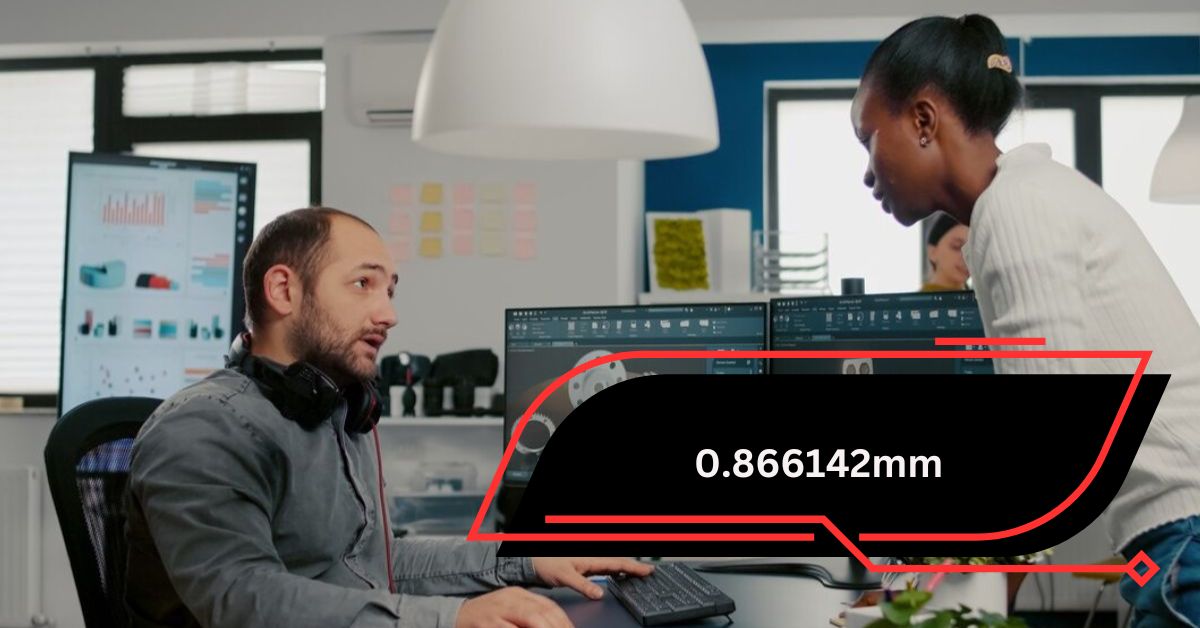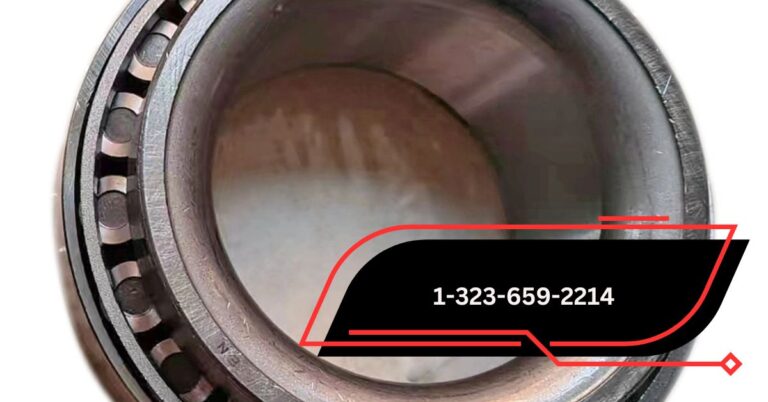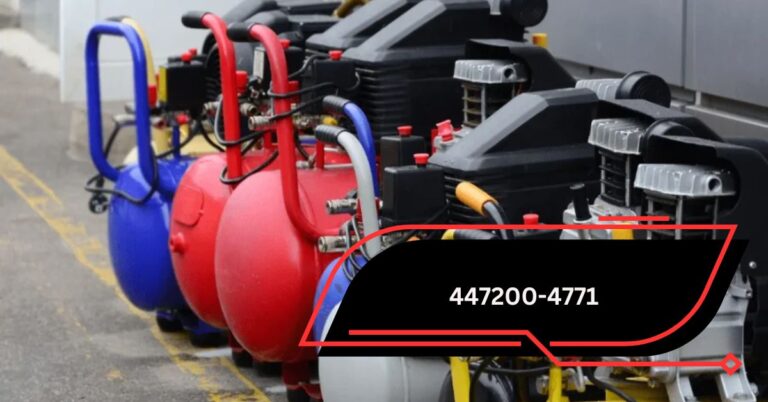Introduction
In the world of precision measurements, numbers as specific as 0.866142mm may seem small, but they carry immense significance in various fields. Whether in engineering, design, manufacturing, or scientific research, measurements with such exactitude are crucial. Understanding what 0.866142mm represents, how it’s applied, and why it matters can provide insight into industries that rely on such precision.
This article will dive deep into the meaning and applications of 0.866142mm, its importance in various fields, and how precision measurement impacts everyday life.
What Does 0.866142mm Represent?
At its core, 0.866142mm is a unit of length, representing a specific dimension within the metric system. The millimeter (mm) is commonly used in engineering, design, and manufacturing where high precision is required.
Why is this number significant? It’s possible that 0.866142mm corresponds to a specific measurement used in a niche field like micro-manufacturing, material science, or electronics. While a general measurement of a millimeter (mm) is common, this highly specific figure indicates applications where even the smallest variance could impact function or performance.
Applications of 0.866142mm
1. Engineering and Design
In fields like mechanical or electrical engineering, parts often need to fit together with incredibly tight tolerances. A measurement of 0.866142mm could be the precise thickness of a component in a machine, a part of a circuit board, or the gap between two moving parts. Engineers rely on such precise figures to ensure products operate efficiently without errors or malfunctions.
2. Precision Manufacturing
Manufacturing processes, especially in high-tech sectors like aerospace, automotive, and semiconductors, require extreme accuracy. A component that’s 0.866142mm might be part of a larger assembly where even a tiny deviation could lead to performance issues.
This measurement could correspond to the diameter of a small part, the thickness of a layer of material, or the tolerance level for fitting components together.
3. Optics and Microelectronics
In the production of lenses, cameras, and sensors, small measurements like 0.866142mm are common. For instance, the curvature of a lens or the spacing of microelectronics may require such precision to ensure clarity and performance. Devices such as smartphones, microscopes, and other optical instruments are developed using incredibly fine measurements to achieve the desired focus or functionality.
4. Scientific Research
Research in physics, chemistry, or biology often requires exact measurements, particularly in experiments dealing with materials at the molecular or atomic level.
For example, in nanotechnology, where dimensions are measured in nanometers or fractions of millimeters, 0.866142mm could be relevant to certain micro-structures or experimental setups.
The Importance of Precision in Measurement
1. Improved Product Quality
Precise measurements ensure that products are made with accuracy, reducing the chances of defects. Whether it’s in consumer electronics, automotive parts, or medical devices, accuracy down to fractions of a millimeter ensures that every component works as expected.
2. Cost Efficiency
Maintaining precise measurements during production helps reduce waste. Manufacturing defects can be costly to fix, but adhering to exact figures like 0.866142mm ensures that fewer materials are wasted, and time is not lost to errors.
3. Safety
In industries such as aerospace, defense, or healthcare, precision is not just about performance—it’s about safety. Components made with exact dimensions ensure that devices or machines operate safely, avoiding catastrophic failures that could result from even slight misalignments.
Tools for Measuring 0.866142mm
To measure something as specific as 0.866142mm, advanced tools are required. Below are some of the instruments used in fields that demand extreme precision:
1. Micrometers
Micrometers are one of the most common tools used for precise measurements, capable of measuring with an accuracy of up to 0.001mm. This tool would easily be able to measure an object at 0.866142mm.
2. Digital Calipers
Digital calipers are another tool that can measure lengths down to fractions of a millimeter. These tools are highly versatile and used across industries like machining, carpentry, and automotive manufacturing.
3. Laser Measuring Devices
Laser measurement tools can measure distances with extreme accuracy, often down to the micron or sub-millimeter level. These devices are used in industries like optics, engineering, and construction, where precise distance measurements are essential.
4. Coordinate Measuring Machines (CMMs)
CMMs are used in industrial environments to measure the physical geometries of objects. They are particularly useful for quality control in manufacturing, as they can measure with extreme accuracy, even down to the smallest millimeter fractions.
Conversion of 0.866142mm to Other Units
To put this measurement into context, let’s convert 0.866142mm into other commonly used units of length:
- Inches: 0.866142mm is approximately 0.0341 inches.
- Micrometers (μm): 0.866142mm is 866.142 micrometers.
- Centimeters (cm): 0.866142mm is 0.0866 centimeters.
- Meters (m): 0.866142mm is 0.000866142 meters.
Understanding these conversions helps make sense of how small or large this measurement is in various contexts.
Common Contexts for 0.866142mm
1. Thickness of Thin Materials
This measurement could be used to describe the thickness of very thin materials, such as sheets of metal, plastics, or films used in packaging or electronics. In manufacturing industries that handle ultra-thin materials, such specific measurements are crucial.
2. Small Gaps or Tolerances
0.866142mm might also refer to the gap between two parts that need to move independently without interfering with each other. In mechanics, this type of clearance is essential to avoid friction and wear while maintaining the functionality of moving components.
3. Dimensions of Small Parts
Small components, like screws, bolts, and washers, could have measurements as fine as 0.866142mm in diameter, thickness, or thread pitch. In industries like watchmaking or precision engineering, these kinds of measurements are commonplace.
Frequently Asked Questions
Q1: Why is 0.866142mm a specific measurement?
A: This number likely comes from a highly specialized context where precision is critical, such as micro-manufacturing, engineering, or scientific research. Small tolerances like this are crucial for the performance and safety of products.
Q2: How is 0.866142mm measured accurately?
A: Measuring tools like micrometers, digital calipers, and laser measuring devices can measure such small dimensions with great accuracy. These tools are used in industries that demand high precision.
Q3: In which industries is 0.866142mm significant?
A: Industries such as precision engineering, electronics manufacturing, automotive, aerospace, and scientific research all rely on measurements of this magnitude for the development and quality control of their products.
Q4: Can errors in measurements like 0.866142mm affect product performance?
A: Absolutely! Even minor discrepancies in measurements, such as variations of fractions of a millimeter, can lead to product malfunctions, increased wear and tear, or safety risks, especially in fields like aerospace or medical device manufacturing.
Conclusion
The significance of 0.866142mm lies in its precision and the industries that depend on such measurements to function effectively. From manufacturing processes to scientific advancements, this seemingly tiny figure represents the careful balance of precision and performance that modern technology and engineering require.





